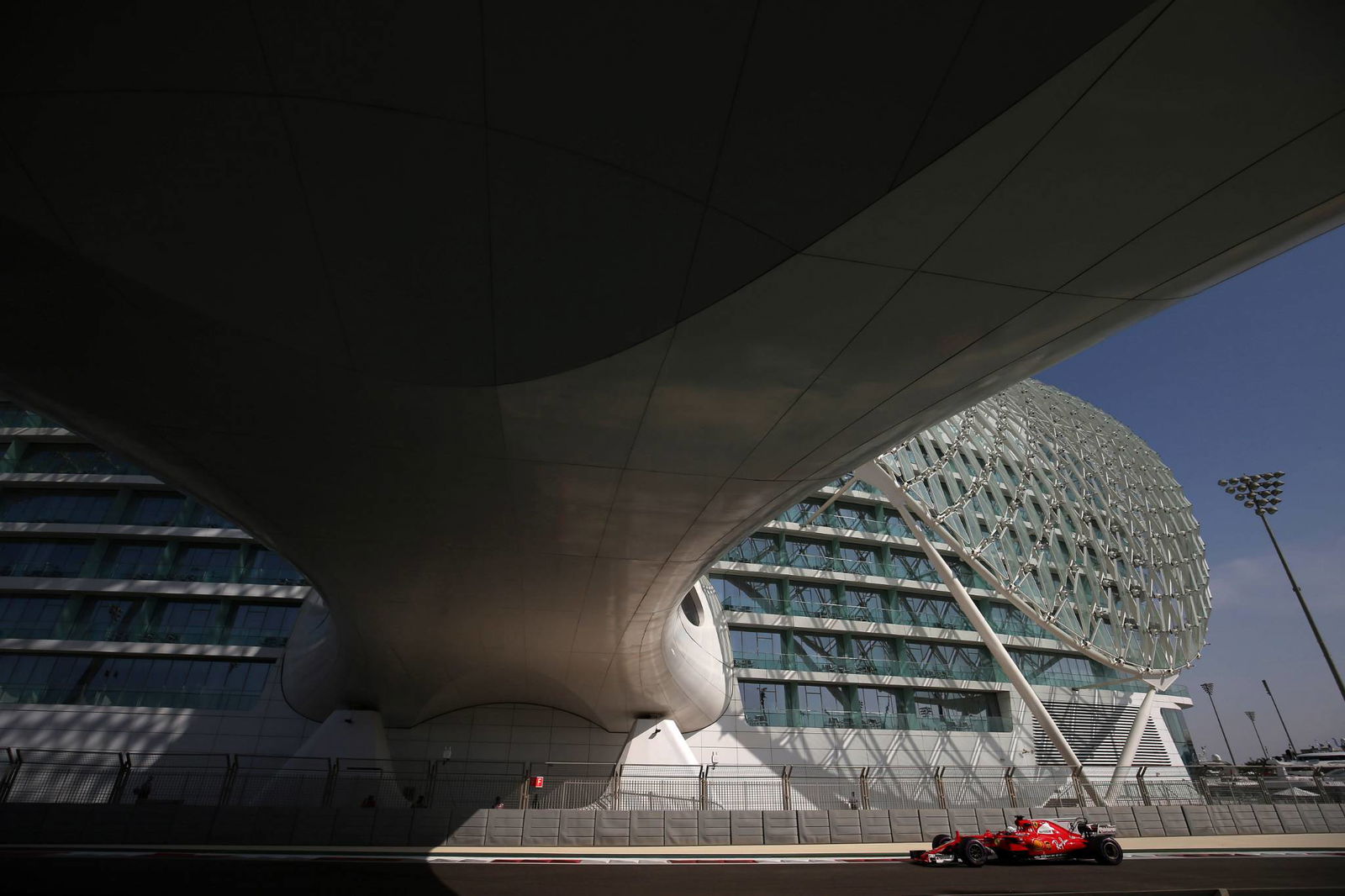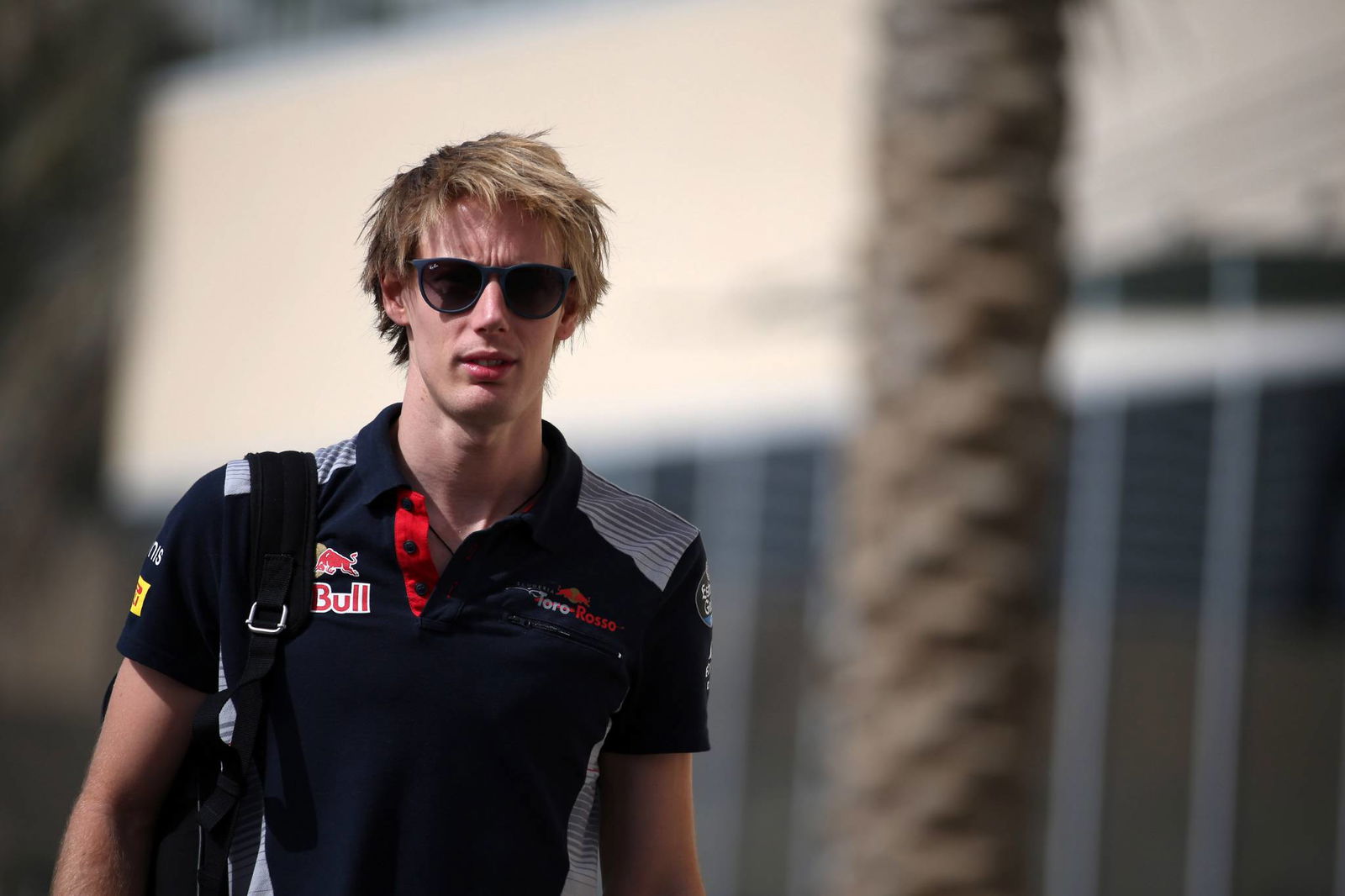F1 Practice Analysis: Raikkonen the man to beat in Abu Dhabi?
The final race of the 2017 Formula 1 season may be a dead rubber in terms of the championship, yet Sunday’s Abu Dhabi Grand Prix offers a number of drivers and teams a chance to build a significant amount of momentum heading into the winter.
Following Ferrari’s fightback in Brazil and Red Bull’s recent resurgence, Mercedes is arguably facing a greater fight than ever at the front of the pack at the Yas Marina Circuit this weekend, with pre-race predictions proving difficult to make.

The final race of the 2017 Formula 1 season may be a dead rubber in terms of the championship, yet Sunday’s Abu Dhabi Grand Prix offers a number of drivers and teams a chance to build a significant amount of momentum heading into the winter.
Following Ferrari’s fightback in Brazil and Red Bull’s recent resurgence, Mercedes is arguably facing a greater fight than ever at the front of the pack at the Yas Marina Circuit this weekend, with pre-race predictions proving difficult to make.
Newly-minted four-time world champion Lewis Hamilton stole the headlines in FP2 by finishing at the top of the timesheets, turning in a new track record under the lights at Yas Marina in the process as he squeaked ahead of Ferrari rival Sebastian Vettel.
However, a dig into the long-run times paints a different picture that looks far better for Ferrari - and in particular, Kimi Raikkonen.
Qualifying sims hint at time to find on the second flying lap
A lack of degradation on the ultra-soft and super-soft tyres in Abu Dhabi this weekend means that the second flying lap could in fact be the fastest come the end of qualifying on Saturday.
Hamilton and Vettel both set their fastest times of the session on their first flying lap on the ultra-soft tyre, but the Mercedes driver opted not to complete a second flyer following a cool-down lap.
Both drivers were looking set to get close to their initial lap times with their first two sectors on their second flying efforts. Hamilton was only a couple of thousandths slower in both S1 and S2, only to back off in the final portion of the lap. Vettel did attempt a second push lap, only to fall four-tenths of a second off his previous best.
Valtteri Bottas did however find more time on his second flyer, improving by a tenth en route to his best lap of the session.
There was even more time to find at Red Bull, particularly for Daniel Ricciardo who had his initial lap time ruined by Romain Grosjean, resulting in a sarcastic, bleeped-out radio message back to the Red Bull pit wall.
While at some tracks that may have been the one chance gone, Ricciardo was able to dig deep and find half a second on his second push lap. He went even faster with his fourth flying effort - the eighth lap in total for the tyre - to lap just three-tenths of a second off Hamilton at the top.
The all-or-nothing nature of Q3 means the best approach will still be to make the first flyer the final time, but there is a possibility for teams to get in an early second run and go for two bites at the cherry.
Raikkonen to the fore on Sunday?
Raikkonen’s qualifying pace left much to be desired as he finished four-tenths of a second back from Hamilton’s headline time - but over the long-runs, he looks to be the man to beat.
Raikkonen has a good record in Abu Dhabi, claiming his first win after returning to F1 with Lotus back in 2012 at the Yas Marina Circuit. And if anyone is in need of a victory right now, it is the ailing Raikkonen.
Of the leading six drivers (two each from Mercedes, Red Bull and Ferrari), five followed a similar programme in FP2. Hamilton, Bottas, Ricciardo, Raikkonen and Max Verstappen all opted to go for a long-run on the ultra-soft tyre to begin with before then completing a shorter super-soft stint later on. Vettel, meanwhile, went his own way by reversing that plan, completing a mammoth super-soft stint before a quick blitz on the ultra-softs.
Given the difference fuel loads and run lengths, it is hard to compare Vettel’s late ultra-soft run to the others. By that account, the length of Raikkonen’s super-soft stint (two laps) makes his data unusable; Bottas is included, but is over just four laps, making it difficult to judge.
Through the ultra-soft runs, Raikkonen’s pace was comparable to that of Bottas and Hamilton when looking at the fastest lap times.
What makes the Finn’s stand out, though, is the consistency. Whereas Bottas required cool-down laps to back off and then push again, Raikkonen was largely able to keep on pushing.
Hamilton, meanwhile, managed only six laps over his stint; Raikkonen’s was more than twice that. However, Hamilton’s ultra-soft stint was ended early when he locked up at Turn 17 and flat-spotted the set of tyres, prompting Mercedes to switch him early onto the super-soft programme.
Verstappen was consistent, but struggled to get close to Raikkonen’s time, while Ricciardo started strongly before tailing off.
What’s more is that Raikkonen’s average through the ultra-soft runs was also quickest, being the only driver to dip into the 1:42 range. It is only marginally quicker than Bottas’, but the Mercedes driver had more times omitted due to the cool-down efforts.
Long Run Averages - Ultra-Soft Tyre (Cool-Down Laps Omitted)
Raikkonen 1:42.918
Bottas 1:43.063
Hamilton 1:43.153
Ricciardo 1:43.177
Verstappen 1:43.538
Where does Vettel feature?
While Vettel’s focus on running on the super-soft compound through the early part of the session makes it difficult to compare his data to that of the other five front-runners, it was notable just how consistent the Ferrari driver was across the course of his stint.
Vettel completed 13 straight flying laps on the super-soft before pitting, with the first 10 all being within seven-tenths of a second. Vettel followed this with a cool-down lap (1:44.273) before two quick times to finish his stint.
Vettel’s super-soft stint data can be compared to the four drivers from rival teams. The graph data may not be particularly impressive for Vettel, but bear in mind he completed his run earlier in the session when the track was greener and he was running heavier fuel loads than the others who did so later on.
Perhaps even more impressive is the fact that Vettel’s average over the super-soft run was 1:43.589 - just half a tenth slower than Verstappen despite the estimated tyre delta between the super-softs and the ultra-softs being between 0.8s and one second.
Given Vettel’s qualifying pace and consistent long-run showing, he may stand a better chance than Raikkonen of making it count by starting at the very front of the pack.
One-stop race all but certain in Abu Dhabi
One of the stand-out features from the data from the FP2 long-runs is the lack of degradation encountered by teams on both the super-soft and the ultra-soft tyre.
The likes of Hamilton, Vettel and Bottas suffered very little in terms of drop-off through their longest stints in FP2, with Vettel’s fastest super-soft time coming on the final flying lap he completed before diving into the pits.
While the odds of a safety car may be relatively high, those who find themselves further down the order or caught up in an opening lap incident may be tempted into an early stop should the safety car come out.
For those at the front of the pack, strategy will be the usual cat-and-mouse battle searching for the undercut - or, should the levels of degradation really be low enough, even the overcut as we saw in Russia earlier this year.

